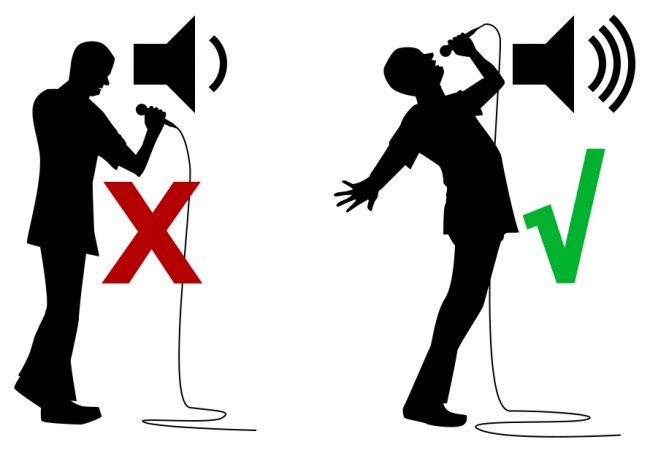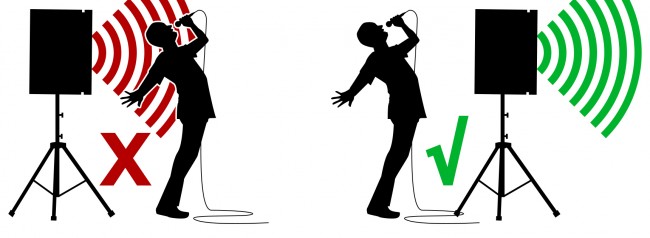
When you’re performing in front of the band, your job is all about connecting the audience with the music. When it comes to mic technique, there are several frontman fails that can drastically diminish your show. Are you committing any of these odious offenses, torturing the technology meant to vitalize your voice? Find out by perusing Sweetwater’s top five fiendish vocal-performance violations below.
1. Sandbagging the Soundcheck
When the sound engineer tells you to sing at the volume that you’ll be performing at, do everyone a favor and belt it out nice and loud. When you sandbag the soundcheck, even the best live engineers will turn up the preamp a bit too much, and when it’s go time, you’re probably going to overload the pre. Sure, you’ll get a bit more “me” in the monitor, but the you you’ll be hearing will probably sound like you’re singing through a distortion box, and your audience won’t thank you for it.
2. Eating the Mic
Proximity effect can be cool, if you’re a radio DJ or you don’t have a band backing your voice, but the all-lows/no-highs effect of choking up on (or choking on) the mic will pretty much guarantee that no one will be able to make out a thing you’re singing. Give the mic a bit of space — even 4″ will thicken up your voice just fine, without turning it into total mud.
3. Cupping the Mic
Want to know how to turn a cardioid mic into an omni? Answer: block the phase ports at the back of the capsule with your fist. And in a live situation, the last thing you want is an omni mic — talk about an excellent way to get show-killing feedback. What’s more, the sound you do get will have an extra dose of proximity effect, ensuring you’ll either have squealing feedback or mud, niether of which is a good choice.
See our Studio Microphone Buying Guide
4. Dreadful Aim and Distancing
Whenever a sound engineer sees a vocalist mismanaging mic distance or pointing a chest-high mic up at their chin, they die a little inside. Seriously, mic technique isn’t rocket surgery — you point the part that’s supposed to catch the sound at your mouth. If the mic were a flashlight, you’d want to literally light up your smile. Pointing the mic anywhere else is just going to pick up a whole lot of room and increase the chance of feedback. While we’re at it, unless you’re belting operatic arias or doing the R&B diva thing, you don’t need to pull the mic away from your mouth (like it’s attached to bungee cable) when you belt out loud passages. Backing off a couple of inches is plenty, and anything more will cause not only an audible drop in volume but also a change in the sound of the mic, due to proximity effect (or lack thereof).
5. Creeping in Front of the PA
Note where the mains are and draw a mental line across the stage. That line is the do not cross line, beyond which the demons of feedback wait to ruin your performance and the audience’s ears. Think about it — feedback is the result of the mic picking up what’s coming out of a speaker and sending it through the PA where it comes back out of that very same speaker. As soon as you step past the line of no return, feedback becomes extremely possible. While we’re at it, let’s take a moment to appreciate that cardioid mics actually pick up sound fairly well from the sides. If you walk sideways in front of monitor wedges, you’re also running a serious risk of feedback onstage, where the sound engineer has to think extremely fast to keep you from being blown off your feet.
There you have it, five things you absolutely should not do when it comes to getting great vocal sound on stage. We hope this little guide has been helpful, and if you realize you’re making these mistakes, just recognize the error of your ways and remedy it right away.


